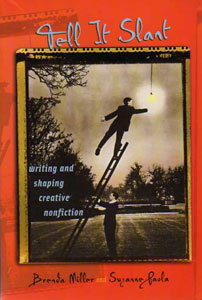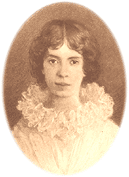Tell all the Truth
I first encountered what is now one of my favorite Emily Dickinson poems in a class I took on memoir writing. Here’s the short, two-stanza poem:
Tell all the Truth but tell it slant — Success in Circuit lies Too bright for our infirm Delight The Truth’s superb surprise As Lightning to the Children eased With explanation kind The Truth must dazzle gradually Or every man be blind —
I’ve found that “tell it slant” has been great advice for me as a writer.
In argumentative writing, it means I don’t always come out with my argument from the gate. If you start with your argument (i.e. we need strong gun control) you can sometimes lose all hope of persuading an audience who doesn’t always agree with you. From the start they already know they disagree with you, whereas if you use a point last structure, you can start on common ground and at least get your audience to listen to you.
In creative writing, to me “tell it slant” means to focus on craft and character and dialogue, to not be overly didactic with whatever “truth” I think I know, to let both characters and my readers figure things out on their own, and allow them to learn their own lessons, which may or may not be what I had originally intended.
 The book Tell it Slant takes its title from Emily Dickinson’s poem, explaining, “she meant, we think, that truth takes on many guises; that the truth of art can be very different than the truth of day-to-day life” (2). The authors go on to quote Salman Rushdie:
The book Tell it Slant takes its title from Emily Dickinson’s poem, explaining, “she meant, we think, that truth takes on many guises; that the truth of art can be very different than the truth of day-to-day life” (2). The authors go on to quote Salman Rushdie:
Literature is where I go to explore the highest and lowest places in human society and in the human spirit, where I hope to find not absolute truth but the truth of the tale, of the imagination and of the heart. (3)
I hope that I can learn to tell the truth in my writing, to speak to the imagination and to the heart.


Leave a Reply
Want to join the discussion?Feel free to contribute!